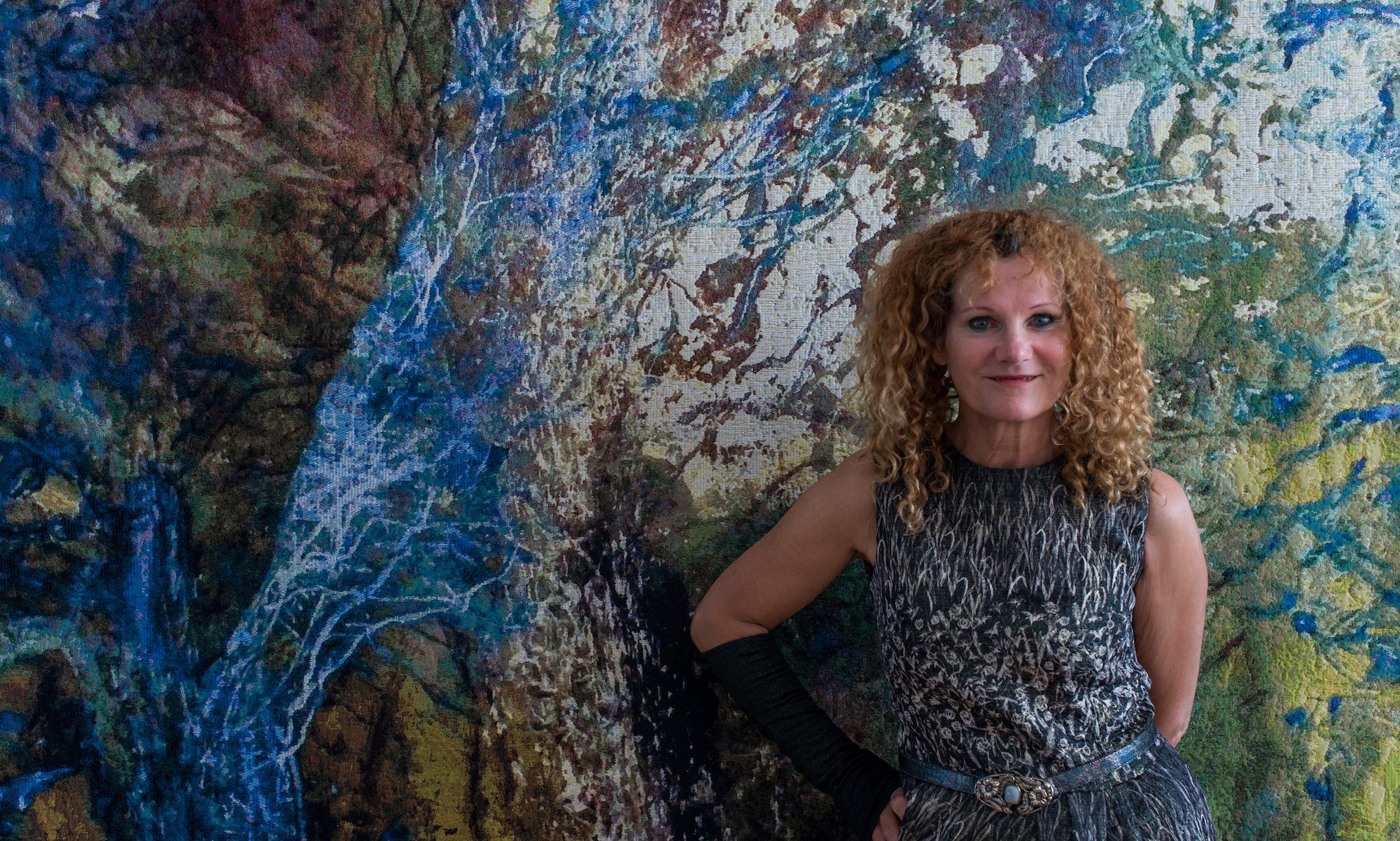Nederlands/ English
| born | Szombathely , Hungary 24 .07.1951 | |
| education | 1970-1975 | Academy of Applied Art, Budapest Tapestry Arts and monumental paintings, Textiles Department |
| 1975-1977 | Master degree in Art | |
| 1978-1979 | teacher assistent of the Academy | |
| 1984 | Since she lives and works in Holland | |
Marianne Benkö – Verdures (2012-2016)
After 15 years, Marianne Benkö returns to her beloved medium, the woven tapestry. Using textile, she paints abstract shapes that refer to the historical Verdures from a bygone era: tapestries filled with complex images of plants, trees and landscapes.
Textile is Benkö’s passion: it is a material imbued with time and love, earthly and connected to human life. Weaving is one of the oldest techniques know to humans. The process of weaving has parallels to life itself. Benkö interweaves her inner world with the images she sees around her. From up close abstract landscapes unfold in a world full of texture and depth, built up of a myriad of fine threads.
Benkö was trained at the Hungarian art academy in both painting and monumental hand woven tapestries. For her, tapestries exist in relation to painting; the one can’t exist without the other. For years she wove tapestries for the public space. But when she moved to the Netherlands in 1984 she started painting again: living feelings, expressed in colour and texture. Her new tapestries in the Verdures series are based on these expressive paintings.
For five years she has been working on a way to translate her paintings to textile. Technical advancements in weaving have created new possibilities. The tapestries are now woven mechanically. Different weaving structures result in different textures and colour effects. Still Benkö applies a hand made detail to each finished piece. She doesn’t want to lose the hand made aspect in her work.
With these works Benkö once again becomes a part of the long and rich history of the woven tapestry, the most primal version of textile art. The historical Verdures Benkö alludes to – decorated with green landscapes – emerged in Flemish workshops from on the sixteenth century. Her own work honours the tradition of these tapestries. In this new series her two favourite techniques come together. The freedom and layeredness of her paintings, combined with the softness and woven textures of her tapestries. By embracing new techniques she is no longer tied to her loom, but finally free to paint with textile.
